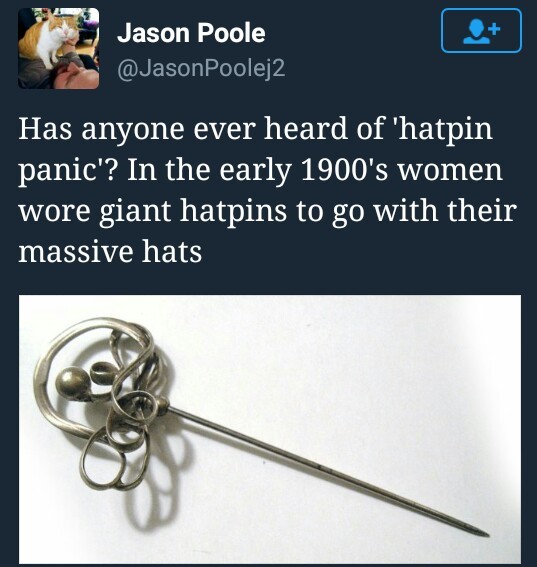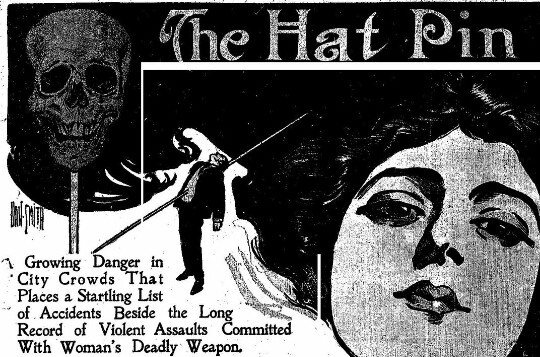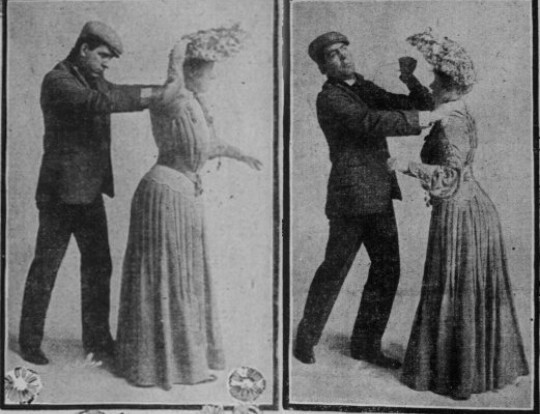Text
MARS’ GUIDE TO TURTLE NOISES!!
So it seems there are a lot of misunderstanding when it comes to turtle noises in the tmnt fandom so I thought I’d give an easy and helpful guide for artists and writers!
Common turtle noises:
Turtles hiss when they’re nervous, stressed, or approached by someone or something they do not feel safe with yet. This is an involuntary response. It’s also the most common noise turtles make!
Hissing paired with heavy breathing is usually a sign that the turtle is in an aggressive mood. When a turtle hisses aggressively, it’ll sometimes come out as a grunt.
Turtles chirp or click for a variety of reasons ranging from discomfort to expressing happiness! Other examples are hunger, stress, boredom, etc.
Grunting can mean a couple of things as well depending on the circumstance. Turtles grunt, squeak, and sigh when they’re happy! This happens when they’re eating or playing.
Churring is a high pitched trilling noise that many animals do, not just turtles! Actually, it’s not really common for turtles to churr to express happiness—as said above, happiness is usually expressed with squeaks, chirps, sighs, and more.
Turtles make a wide variety of different sounds to communicate to eachother!!! These are just the most common ones.
Turtles vocalizations are very quiet, not many noises can be heard by the humans naked ear. Though it’s common for turtles to communicate vocally to one another, they tend to communicate though physical means more often (such as nose touching as a form of introduction or expression of curiosity!)
I Hope this is helpful for y’all!!! Enjoy!!!
2K notes
·
View notes
Text
Hero: 108 fandom, hear my plead!
I need to know how many people are out there watch or once watched the show Hero: 108. We need to revive it!
Reblog if you are apart off this dyingand probably dead fandom!
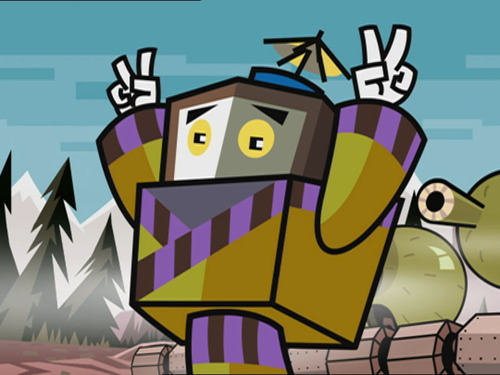
Okay bye :D
654 notes
·
View notes
Text
Ninjago AU: Both Wu and Garmadon were bitten by the Great Devourer. When Garmadon got bit, Wu ran out to help, only to get bitten himself. Both get banished during their legendary battle.
6 notes
·
View notes
Text
If you ship Oppositeshipping, please reblog!!!!!!!!!!!
Reblog so we can see how many shippers there are.
YOU ARE NOT ALONE.
Kai + Zane = Kandy KANE!
130 notes
·
View notes
Photo
Well-behaved people rarely make it into history books.

Babylonian era problems. (photo via tbc34)
625K notes
·
View notes
Photo
I have this theory that both Lloyd and Wu have albinism. (They’re supposed to be Asian, but both are blond). Also, Misako is a Japanese name, so she’s possibly Asian as well. Garamdon passed on Albinism to Lloyd, and Wu has it too, so maybe it comes from one of their parents (First Spinjitsu Master or Mrs.First Spinjitsu Master) or both. In Garmadon it’s dormant (not active), which is why he isn’t blond. I have seen a couple of theories that Wu might be Lloyd’s father, because of his hair when he was younger, but I think it’s a simple genetic disorder. Lloyd might pass it on to his Lloydlings, or he might not.
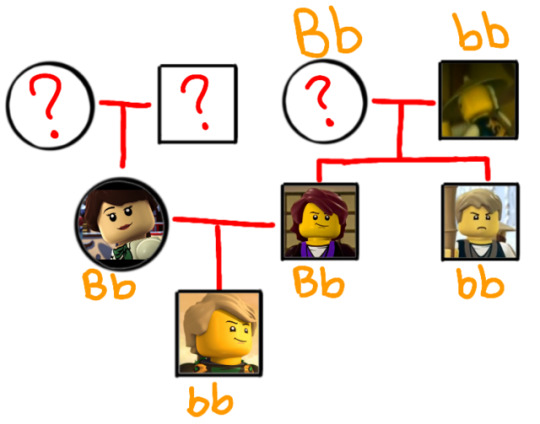
I’ve seen people draw out punnet squares to prove Garmadon’s the father of Lloyd, yet people still don’t believe it. So I decided to go a bit farther back to use three generations.
In order to help with some of the returning Who’s the Father?! discourse, I made a pedigree!
Basic understanding of a pedigree:
1) The lines going between a circle and square indicate Procreation/marriage
2) Lines going above shapes and then connecting down indicate siblings
3) Circles are females and squares are males, I added pictures to help with visualizing.
“B”= Brown Trait
“b”= Blonde Trait
Let’s start with Lloyd’s grandparents in cannon. We have only seen and heard from one during the entire show’s running. The F.S.M. We clearly see that the FSM has blonde hair, giving him the “bb” genotype. We see in his two children, Wu and Garmadon, that they have different hair colors.
Wu took after his dad, becoming blonde. This means the mother had a “b” trait to also give. Garmadon has brown hair, which we can assume his mother also had. This means Wu and Garmadon’s mother was Heterozygous for Brown hair, giving her the genotype “Bb”. Since the FSM can only give “b” traits, all his children would have either been blonde (bb) or blonde carriers (Bb).
We have no idea what Misako’s parents look like, so we’ll assume they are both Heterozygous Brown traits, making Misako also take after them, becoming Heterozygous Brown (Bb).
But if we didn’t want to start from Misako’s parents, we can start at Lloyd. Lloyd looks to be a natural blonde (bb). This means that he received two recessive alleles, one from mom and one from dad. We can see when Misako was young she had brown hair, giving her a “B” trait. And since Lloyd has “bb”, work that genetic info backwards and we have Misako as a “Bb” hair genotype.
So, until we see one or both of Misako’s parents, we can’t be for sure on Misako’s genotype. But by back tracking Lloyd’s genes to his parents and grandparents, we can see how Garmadon is indeed the father with our current knowledge.
~*~
If anyone needs my help on making pedigrees for anything, HMU my doods! I love figure I ng out cartoon genetics!
274 notes
·
View notes
Text
The most annoying superpower has to be the ability to see the future. You already know whats going to happen, all your books and movies and tv shows are spoiled and both birthdays and chrismas suck because you already know what you’re going to get. Not only that, but all of your friends will annoy you will all of these questions about their futures and you might not even be able to control this ability.
0 notes
Text
I would really love to see a character that screams “Obvious Villain”, you know, all creepy and stuff, complete with an evil laugh, but he/she is actually a very nice person, like, they help the hero and stuff.
Also, a obvious good guy, like a rainbow princess in a sparkly pink dress and a tiara, wearing good-guy clothes and they’re actually the most evil person in the entire book/show/movie.
3 notes
·
View notes
Text
Spy Asks
What organization does your character work for? Have they always been loyal to this group, or did they defect from elsewhere? If they are freelance, who commonly employs them?
What kind of spy gear does your character typically use? Do they have Bond-like gadgets, or rely more on their wits and whatever is at hand on a mission?
Do they often have partners on their operations, or do they work alone? Do they have a preference for one arrangement over another?
What would their superiors say about their performance in the field? Do they approve of your characters methods, or does your character get into trouble with their boss more often than not?
Has your character ever been captured by the enemy? If so, what happened? Did your character escape, or have to be rescued? Has it happened more than once?
Does your character operate within the country they work for, or are they an international agent?
How dirty is your character willing to get in the name of a mission? Other than general lying and sneaking that the job requires, how far will they go? Do they draw the line at hurting others, or are they the kind to take even assassinations in stride? Has their time in the service dampened their morals at all?
What would your character consider their most memorable mission?
What failure during a mission haunts your character the most?
If your character has loved ones outside of their job, what do they tell them about the job? Does anyone from their personal life know the truth, or does your character come up with a fake job? Have their secrets ever strained their relationships with others?
Is your character more of an action-packed James Bond seduction-and-tuxedos kind of spy, or a realistic George Smiley hard work-and-moral ambiguity kind of spy?
If your character were the subject of a Bond flick, who would be their ‘Bond Girl’?
What is your characters specialty in the field? Are they perhaps good at infiltration, interrogation, or reading others? Perhaps they have a skill in hacking, or being able to tail others? What is their ultimate proficiency, and how helpful is it in the field?
When it’s a slow day on the job, what might your character do? Will they be catching up on paperwork? Does cabin fever set in easily for them? Or are they thankful for some downtime spent around HQ?
Would your muse ever betray their parent organization? If so, what would drive them to do so? If no, what is it that keeps them loyal?
Has your muse ever had to infiltrate an enemy organization for an extended period? How did they go about it? Did having to live under an alternate identity have any effect on them once they were pulled from the mission?
What did your muse do before becoming a spy? If this is their first job, what did they do to catch the attention of their organization?
Does your muse have any plans after the leave the service? Do they have some dream to pursue, or will they be happy just to live quietly after their time as a spy is over? Do they intend to make a career out of the service, perhaps being ambitious and seeking promotion?
What is your character’s ‘tell?’ How would an enemy or ally be able to tell that your character is lying, no matter how insignificant the tell might be?
Does your muse have a go-to fake identity? If so, what is it, and how was the name chosen? How solid is this fake identity? Would it hold up under scrutiny, or is it an obvious fake if someone were to go digging? If your character simply picks names at random, how do they make up an identity, and how do they keep from screwing it up?
144 notes
·
View notes
Text
Cryptid of the Day: Cactus cat
A cat covered in sharp spikes that would cut open cacti with their spiked tails and then sleep all day. At night, it would get drunk on said juice and make freaky noises all night, which would scare cowboys. They are territorial, attacking strangers. They sleep inside cacti all day, attract lifemates with their juices and thankfully, attacks by these Bobcat-like creatures are rare, but cowboys have woken up in the past with strange welts on their legs from these attacks. If you live in California, Nevada or New Mexico, beware of this strange creature, eating your cacti in the middle of the night.
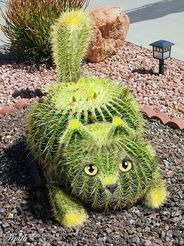

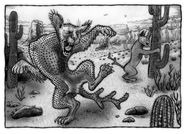
A couple of drawings, if you will.
6 notes
·
View notes
Photo
I want to know more about this guy,

Babylonian era problems. (photo via tbc34)
625K notes
·
View notes
Text
Story time:
I work in a decent sized, local, indie bookstore.
It’s a great job 99% of the time and a lot of our customers are pretty neat people.
Any who, middle of the day this little old lady comes up.
She’s lovably kooky.
She effuses how much she loves the store and how she wishes she could spend more time in it but her husband is waiting in the car
(Oh! I better buy him some chocolate!),
she piles a bunch of art supplies on the counter and then stops and tells me how my bangs are beautiful and remind her of the ocean
(“Wooooosh” she says, making a wave gesture with her hand)
Ok.
I think to myself.
Awesomely happy, weird little old ladies are my favorite kind of customer.
They’re thrilled about everything and they’re comfortably bananas.
I can have a good time with this one.
So we chat and it’s nice.
Then this kid, who’s been up my counter a few times to gather his school textbooks, comes up in line behind her
(we’re connected to a major university in the city so we have a lot of harried students pass through).
She turns around to him and, out of nowhere, demands that he put his textbooks on the counter.
He’s confused but she explains that she’s going to buy his textbooks.
He goes sheetrock white.
He refuses and adamantly insists that she can’t do that.
It’s like, $400 worth of textbooks.
She, this tiny old woman, bodily takes them out of her hands, throws them on the counter and turns to me with a intense stare and tells me to put them on her bill.
The kid at this point is practically in tears.
He’s confused and shocked and grateful.
Then she turns to him and says “you need chocolate.”
She starts grabbing handfuls of chocolates and putting them in her pile.
He keeps asking her “why are you doing this?”
She responds “Do you like Harry Potter?“ and throws a copy of the new Cursed Child on the pile too.
Finally she’s done and I ring her up for a crazy amount of money.
She pays and asks me to please give the kid a few bags for his stuff.
While I’m bagging up her merchandise the kid hugs her.
We’re both telling her how amazing she is and what an awesome thing she’s done.
She turns to both of us and says probably one of the most profound, unscripted things I’ve ever had someone say:
“It’s important to be kind.
You can’t know all the times that you’ve hurt people in tiny, significant ways.
It’s easy to be cruel without meaning to be.
There’s nothing you can do about that.
But you can choose to be kind.
Be kind.”
The kid thanks her again and leaves.
I tell her again how awesome she is.
She’s staring out the door after him and says to me:
“My son is a homeless meth addict.
I don’t know what I did.
I see that boy and I see the man my son could have been if someone had chosen to be kind to him at just the right time.”
I’ve bagged up all her stuff and at this point am super awkward and feel like I should say something but I don’t know what.
Then she turns to me and says: “I wish I could have bangs like that but my darn hair is just too curly.“
And leaves.
And that is the story of the best customer I’ve ever had.
Be kind to somebody today.
275K notes
·
View notes
Photo

He says that KKK members have many misconceptions about black people, which stem mostly from intense brainwashing in the home. When the Klansmen get to know him, he says, it becomes impossible for them to hold on to their prejudices. He explains:
This Klansman and I were riding around in my car and the topic of crime came up. He made the remark that all black people had a gene that makes us violent. I said ‘Gary, what are you talking about?’ He said ‘Who’s doing all the shootings?’ I said ‘let me tell you something, I am as black as anyone you’ve ever seen and I’ve never done a drive by or a shooting.’ After a time I said ‘you know, it’s a fact that all white people have within them a gene that makes them serial killers. Name me three black serial killers.’ He could not do it. I said ‘you have the gene. It’s just latent.’ He said ‘well that’s stupid’ I said ‘it’s just as stupid as what you said to me.’ He was very quiet after that and I know it was sinking in.
(Full Article)
(Fact Source) Follow **Ultrafacts **for more facts
104K notes
·
View notes
Text
The 9 Elements of a VILLAIN
If we’re being honest, one character is always the most fun to develop when you’re writing a new story. It must be the main character, right? The person you’re going to follow throughout the story, the one that means the most to you?
Nope. It’s the villain.
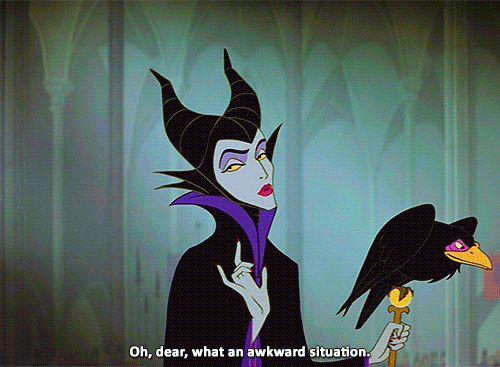
Villains are just FUN. You get to creep into the darkest corners of your writer brain and conjure up the most unashamedly detestable human being you possibly can.
This is how we look when we begin creating a villain.
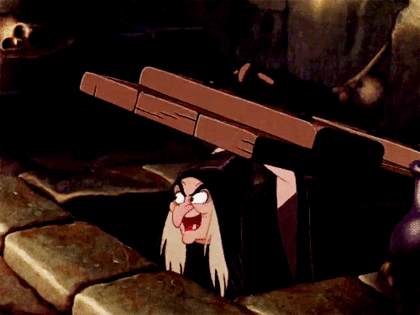
But sometimes, it can be difficult to to make sure they’re fully believable humans. So here are the nine elements that have helped me out when developing these terrible people …
1) Hero’s Shadow:
The relationship between the main character and the villain is the most important one in the story, because it is the source of all conflict. Without the villain causing trouble, the main character wouldn’t have the chance to be a hero. Without that trouble, the main character’s weaknesses wouldn’t be pressured, which means they couldn’t change. The villain is a condensed and magnified embodiment of the inner weakness that the hero is battling. They’re the SHADOW of hero, the example of what will happen if the main character goes down the wrong path. Both are facing the same problem in different ways. For example Darth Vader and Luke.
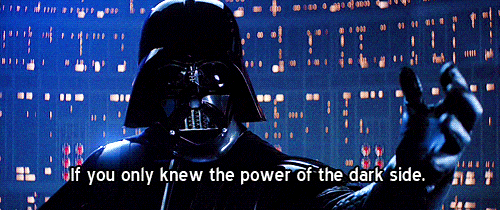
2) Conflict Strategy:
In the pursuit of stopping the hero from achieving their goal, the villain is going to attack them on 1) a personal relationship level 2) a societal level and 3) an inner level. They’re going to attack the people around them, they’re going to cause consequences for the community surrounding them, they’re going to get into their head and plague them. Because the hallmark of a villain is that they’re the person who’s perfectly suited to attack the hero’s greatest weakness. Villains should have a distinct set of tactics to destroy the main character, on at least two levels.
3) Flaws:
This one’s expected. Of course a villain has flaws, it’s in the job description. But flaws do not equate to ‘He kicks turtles every morning before breakfast’ or 'His favorite hobby is butterfly stomping’ or, more within the realm of possibility, “He wants to kill the hero”. These are evil actions, NOT flaws. A lot of villains, particularly in movies, will be given horrible things to do without any explanation for WHY they do them. And it’s pretty easy to give them reasons: just give them human weaknesses! That’s it. Whether the actions they take are as small as theft or as big as blowing up a planet, these actions stem from recognizable HUMAN FLAWS. So like a main character, a villain needs mental and moral flaws.
Yup, even Maleficent has human flaws. And she’s a dragon part of the time.

4) Counter Goal:
All characters exist because they want something. And what do villains want? To get whatever the main character wants (for very different reasons), to stop them from reaching their goal, or another goal that directly conflicts with the hero’s goal. As long as that big tangible thing they want locks hero and villain in battle, you’re good. Think 101 Dalmatians: Cruella and the good guys are fighting over the puppies.
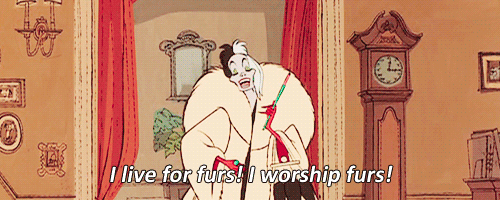
5) Surface Motivations:
Why is it that villains always have a team of followers? Because villains never outright state their true motivations. They always have a cover story, and that cover will paint them as righteous. Villains want to look like the good guy. So their real Hidden Motivations are defended by twisting perceptions of Good & Evil, by portraying evil acts in a positive light, by indulging their followers selfish emotions and desire to feel like “one of the good guys. "
Take Gothel for example: she’s a loving mother who wants to protect her daughter from all the world’s darkness. (Sure you do, Flynn stabber.)
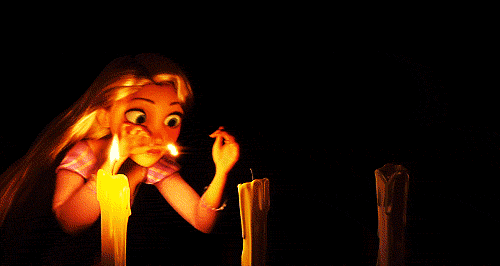
Surface Motivations never stand up to logical scrutiny and a functioning moral compass, but giving your bad guy a compelling argument against your good side always makes things more interesting, which brings us to …
6) Counter Statement:
The main character needs to learn some kind of truth that will enable them to fix their lives, overcome their weaknesses, banish their ghosts. It’s whatever statement about "how to live a better life” you want to prove with your story. Your villain has other ideas. They don’t agree with that statement, have other beliefs about living life well, and represent an argument against it. For example, Voldemort: “there is no good and evil, there is only power, and those too weak to seek it."
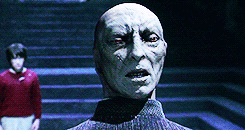
Although your argument isn’t very convincing, Voldy. I mean, you’re living in the back of some guy’s head.
7) Characterization:
This is everything on the surface of the villain. The way they speak, the way they look, the way they act, their role in life, their status and power. This is the facade they project for the world to see, a calculated effort to control how they are perceived. This is closely connected to that surface want, because that surface is what they wish people to believe about them. Over time, the reader and the other characters are going to be able to see through this mask and see what it conceals. My favorite Disney example of this is Mother Gothel: on the surface she’s this bubbly mom who loves Rapunzel and wants to protect her from the harshness of the world.

You can think of this as the text …
8) Hidden Motivation:
And this is the subtext. That surface motivation they want the world to believe is a mask concealing their true motivation, which is always rooted in their flaws, selfishness, and skewed beliefs.
9) Ghosts, Justification, Self-Obsession:
These three are closely related, so they get counted together.
Like main characters, villains have GHOSTS: events from their backstories that knocked their worldviews out of alignment, that marked the beginning of their weaknesses, that haunt them still. Because these happened, the originally benign person allowed themselves to turn into someone who could occupy the job of "villain” in a story. Usually, these events are genuine misfortunes and are worthy of sympathy, just like the ghosts of a main character. Think of Voldemort growing up in an orphanage talking to snakes.
BUT! When it comes to ghosts, the major difference between a hero and a villain is HOW THEY DEAL with these unpleasant past events. Both have suffered, but react to suffering in very different ways. A villain will be consumed by these events, obsessed with the real (or imagined) persecution or disadvantage they’ve endured, convinced that all personal responsibility is nullified by their status of injured party. Past tragedies become a talisman that grants immunity from decency.
This scene from A Series of Unfortunate Events sums it up. An adult makes an excuse for a terrible person by saying he had a terrible childhood. And Klaus replies:

Yes, maybe they’ve both lived through tragedy. But THE KIDS aren’t hurting others because of it.
Because villains, who are constantly victimizing heroes, are completely convinced that THEY are the true victims here. No matter what they do, no matter what they are, they blame everything on that ghost, whether it was another person, society, or circumstances. And later they blame the hero, who they see as the REAL villain. For example, Frollo from The Hunchback of Notre Dame:
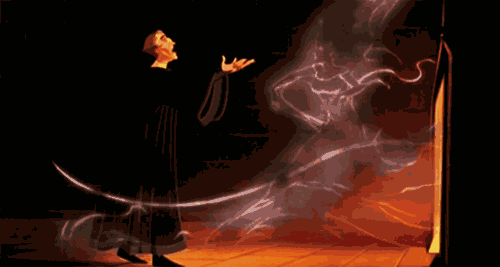
“It’s not my fault, I’m not to blame”
So! WHY are villains like this?
SELF-OBSESSION! Yup, villains spend an unhealthy amount of time thinking about themselves and their plights and their plots. Think of any villain and it’s not hard to see the inherent narcissism behind everything they do. Like willingness to take action is the nonnegotiable trait of a main character, self-obsession is the trait that all villains seem to share.

So! Developing villains in this way has worked out for me so far. If it looks like it might be helpful for you, give it a try.
And in the spirit of creating someone to torment our main characters and ruin their lives, here’s one more maniacal laugh for the road:
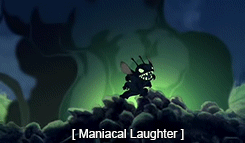
18K notes
·
View notes
Text
20 Basic Plots
1. QUEST - the plot involves the Protagonist’s search for a person, place or thing, tangible or intangible (but must be quantifiable, so think of this as a noun; i.e., immortality).
2. ADVENTURE - this plot involves the Protagonist going in search of their fortune, and since fortune is never found at home, the Protagonist goes to search for it somewhere over the rainbow.
3. PURSUIT - this plot literally involves hide-and-seek, one person chasing another.
4. RESCUE - this plot involves the Protagonist searching for someone or something, usually consisting of three main characters - the Protagonist, the Victim & the Antagonist.
5. ESCAPE - plot involves a Protagonist confined against their will who wants to escape (does not include some one trying to escape their personal demons).
6. REVENGE - retaliation by Protagonist or Antagonist against the other for real or imagined injury.
7. THE RIDDLE - plot involves the Protagonist’s search for clues to find the hidden meaning of something in question that is deliberately enigmatic or ambiguous.
8. RIVALRY - plot involves Protagonist competing for same object or goal as another person (their rival).
9. UNDERDOG - plot involves a Protagonist competing for an object or goal that is at a great disadvantage and is faced with overwhelming odds.
10. TEMPTATION - plot involves a Protagonist that for one reason or another is induced or persuaded to do something that is unwise, wrong or immoral.
11. METAMORPHOSIS - this plot involves the physical characteristics of the Protagonist actually changing from one form to another (reflecting their inner psychological identity).
12. TRANSFORMATION - plot involves the process of change in the Protagonist as they journey through a stage of life that moves them from one significant character state to another.
13. MATURATION - plot involves the Protagonist facing a problem that is part of growing up, and from dealing with it, emerging into a state of adulthood (going from innocence to experience).
14. LOVE - plot involves the Protagonist overcoming the obstacles to love that keeps them from consummating (engaging in) true love.
15. FORBIDDEN LOVE - plot involves Protagonist(s) overcoming obstacles created by social mores and taboos to consummate their relationship (and sometimes finding it at too high a price to live with).
16. SACRIFICE - plot involves the Protagonist taking action(s) that is motivated by a higher purpose (concept) such as love, honor, charity or for the sake of humanity.
17. DISCOVERY - plot that is the most character-centered of all, involves the Protagonist having to overcome an upheavel(s) in their life, and thereby discovering something important (and buried) within them a better understanding of life (i.e., better appreciation of their life, a clearer purpose in their life, etc.)
18. WRETCHED EXCESS - plot involves a Protagonist who, either by choice or by accident, pushes the limits of acceptable behavior to the extreme and is forced to deal with the consequences (generally deals with the psychological decline of the character).
19. ASCENSION - rags-to-riches plot deals with the rise (success) of Protagonist due to a dominating character trait that helps them to succeed.
20. DECISION - riches-to-rags plot deals with the fall (destruction) of Protagonist due to dominating character trait that eventually destroys their success.
by Pavel Simakov
52K notes
·
View notes

